Rodeo chaps are more than just flashy Western attire—they’re an essential part of a cowboy or cowgirl’s rodeo gear, combining protection, tradition, and style. Made from durable leather, rodeo chaps shield riders’ legs from bull riding abrasions, rope burns, and brush contact during events like bronco riding and barrel racing. They’re often adorned with fringe, tooling, conchos, and bold colors to showcase personal style while honoring Western heritage. Whether you’re choosing custom rodeo chaps for a professional competition or picking affordable practice chaps, the fit and material quality are crucial for both safety and performance. From rodeo queen chaps with intricate beadwork to bull riding chaps built for resilience, each pair reflects the rider’s identity while standing up to the rough and tumble of arena life.
What Are Rodeo Chaps?
Rodeo chaps are specialized Western leather leg coverings worn by rodeo riders to provide protection, comfort, and style during events like bull riding, saddle bronc, and bareback riding. Unlike everyday leather pants, chaps are designed to be worn over jeans, with open backs secured by belts and straps for easy movement. Traditionally crafted from cowhide or suede, they shield a rider’s legs from rope burns, animal hides, and impact while also offering a stage for Western artistry—with features such as fringe, tooling, bright colors, and sponsor logos. For rodeo queens and parade riders, chaps become a canvas for personalization, showcasing beadwork, embroidery, and bold patterns that celebrate Western heritage. Whether functional or decorative, rodeo chaps remain an iconic part of the rodeo culture and cowboy tradition.
Types of Rodeo Chaps
Rodeo chaps come in several distinct styles, each designed for specific events and rider preferences.
-
Shotgun Chaps feature full-length, close-fitting legs without fringe, offering maximum protection and wind resistance, often used in colder weather or working ranch conditions.
-
Batwing Chaps have wide, flared legs with long fringe that allow excellent freedom of movement—popular among bull riders and rodeo performers for both style and ventilation.
-
Chinks are shorter, ending below the knee, with three-quarter leg coverage ideal for warm-weather rodeos and ranch work, balancing mobility with protection.
-
Rodeo Queen Chaps are highly decorative, often crafted from brightly dyed leather, metallic inlays, beadwork, and custom embroidery to stand out in parades, pageants, and arena presentations.
Each type serves a unique purpose, blending function, tradition, and Western flair to meet the needs of different riders and events.
How to Make Rodeo Chaps
Making rodeo chaps is a skilled craft that blends Western tradition, functionality, and personal style. The process starts with selecting high-quality leather—commonly cowhide, buffalo, or suede—chosen for durability, flexibility, and visual appeal. First, the maker takes precise body measurements for waist, thigh, and leg length to ensure a comfortable fit. The leather is then cut into two leg panels and a yoke (the upper waistband section), following a paper or cardboard pattern. Next comes decorative customization, such as fringe, tooling, embroidery, or inlays, which can reflect a rider’s personal brand or team colors. The panels are punched and sewn together using heavy-duty thread or rivets for strength, with adjustable buckles or straps added at the waist and thigh for a secure fit. Finally, the chaps are finished with edge burnishing and leather conditioning to protect against wear and weather. A well-crafted pair of rodeo chaps not only provides essential leg protection but also makes a bold statement in the rodeo arena.
Why Do Rodeo Cowboys Wear Chaps
Rodeo cowboys wear chaps for both practical protection and traditional style. In the rodeo arena, riders face constant risks from buckling animals, flying debris, and rough equipment. Chaps shield the legs from cuts, scrapes, and bruises caused by rope burns, animal hooves, or contact with the saddle. The leather also offers a barrier against harsh weather, protecting riders from wind, dust, and rain during outdoor events. Beyond safety, chaps play a major role in rodeo heritage and showmanship—their fringe, tooling, and bright colors add movement and flair, making a rider more visible to judges and spectators. For many cowboys, chaps are also a symbol of identity, representing the cowboy way of life and honoring Western tradition. In short, they’re not just gear—they’re an essential blend of function, durability, and cowboy culture.
How to Buy Chaps Western Rodeo
Buying Western rodeo chaps requires balancing fit, function, and style. Start by choosing the right material—most professional riders prefer genuine cowhide leather for durability, while beginners may opt for suede or split leather for flexibility. Measure your waist, thigh, and inseam carefully to ensure a secure yet comfortable fit that won’t restrict movement during a ride. Consider the type of rodeo event—bull riding chaps often feature extra padding, while bronc riding chaps may have lighter designs for agility. Look for quality craftsmanship such as double stitching, reinforced stress points, and strong buckles for long-lasting performance. Design also matters; many cowboys choose tooled leather, fringe, and custom colors to reflect their personal style or team branding. Finally, purchase from a reputable rodeo gear supplier who can offer customization and sizing advice to ensure your chaps are both arena-ready and built to last.
How to Clean Rodeo Chaps
Cleaning rodeo chaps is essential to maintain their durability, flexibility, and professional appearance. Start by brushing off dust, dirt, and arena debris using a soft-bristle brush or dry cloth. For leather chaps, use a mild leather cleaner and a damp cloth never soak them in water, as excess moisture can cause stiffness or cracking. Suede or split leather chaps require a suede brush or eraser to lift dirt without damaging the nap. Always check for sweat stains, mud buildup, and fringe tangles after each rodeo event. Once clean, apply a quality leather conditioner to keep the material supple and prevent dryness. Allow the chaps to air-dry naturally, away from direct sunlight or heat sources, which can shrink or warp the leather. Regular maintenance not only extends the lifespan of your chaps but also ensures they remain comfortable, protective, and visually striking in the rodeo arena.
How to Customize Rodeo Chaps
Customizing rodeo chaps allows cowboys and cowgirls to express their personal style while ensuring the gear fits perfectly for performance and protection. Start by choosing the right base material, typically premium cowhide or suede, which offers durability and flexibility in the arena. Select a color scheme and pattern that reflects your personality—whether it’s classic Western tones, bold rodeo colors, or intricate Native-inspired designs. Many riders opt for fringe accents, tooled leather panels, beadwork, or embroidery to make their chaps stand out. You can also personalize them with your name, rodeo number, sponsor logos, or event-specific themes using leather stamping or patchwork. For rodeo queens and competitive riders, metallic accents, rhinestones, and contrasting fringe can add extra flair. Ensure that measurements are precise for a snug yet comfortable fit, as ill-fitting chaps can affect performance. A well-customized pair of rodeo chaps not only offers protection and comfort but also makes a powerful statement in the rodeo arena.
How to Fit Rodeo Chaps
Fitting rodeo chaps correctly is essential for both safety and comfort during riding or competition. Start by measuring your waist, thigh, and outseam length while wearing the jeans or pants you’ll use in the arena. The waistband of the chaps should sit snugly around your waist or hips without restricting movement, typically secured with an adjustable belt or buckle. The thigh circumference needs enough room to allow flexibility while ensuring the chaps don’t slide or twist when riding. Length is equally important—rodeo chaps should cover the leg down to the boot tops, with fringe hanging slightly longer for style and coverage. When trying them on, check that the knee and hip areas move freely without pulling or gaping. Remember, leather stretches over time, so a slightly snug fit is ideal initially. A properly fitted pair of rodeo chaps not only improves mobility and protection but also enhances the rider’s professional appearance in the arena.
How to Measure for Rodeo Chaps
Getting the right fit for rodeo chaps is crucial for comfort, safety, and style. Here’s a simple step-by-step guide to help you measure yourself accurately before ordering:
1. Measure Your Waist
-
Use a flexible tape measure.
-
Wrap it around your natural waistline — usually just above your belly button.
-
Keep the tape snug but not too tight.
-
Note the measurement in inches.
2. Measure Your Inseam
-
Stand straight with your legs slightly apart.
-
Measure from the crotch seam down to the bottom of your ankle or where you want the chaps to end.
-
This length ensures your chaps cover your legs properly without dragging.
3. Measure Your Hip Width (optional but helpful)
-
Wrap the tape measure around the fullest part of your hips.
-
This helps if you want a custom or snug fit.
4. Measure Your Thigh Circumference (optional for custom-fit chaps)
-
Measure around the thickest part of your thigh.
-
This is especially useful for custom chaps or if you prefer a more tailored look.
What Is the Purpose of Rodeo Chaps?
Rodeo chaps serve both practical and protective functions for cowboys and rodeo riders. Their main purposes include:
Protection:
Rodeo chaps protect the rider’s legs from brush, thorns, and rough surfaces when riding through rugged terrain or handling livestock. They also help shield against rope burns, abrasions, and scrapes during rodeo events.
Durability:
Made from tough leather or suede, chaps provide an extra layer of durability and support, helping riders stay comfortable during long hours on horseback.
Grip and Control:
The texture and fit of chaps improve leg grip on the saddle, enhancing rider stability and control, which is essential in fast-paced rodeo events like bull riding or bronc riding.
Style and Tradition:
Beyond function, chaps are a traditional element of western and rodeo attire, showcasing craftsmanship, cultural heritage, and personal style.
Why Do People Use Chaps?
People use chaps primarily for protection and practicality when working with horses, livestock, or riding in rough outdoor environments. Here’s why chaps are commonly worn:
Leg Protection:
Chaps shield the legs from thorny brush, barbed wire, rough terrain, and other hazards that can cause cuts, scrapes, or bruises.
Safety While Riding:
They help prevent rope burns and provide an extra barrier against friction and impact during activities like rodeo riding, cattle herding, or trail riding.
Improved Grip:
Chaps offer better traction and grip on the saddle, helping riders maintain balance and control.
Weather Shield:
They protect against wind, rain, and cold, keeping the legs warmer and drier.
Cultural and Fashion Statement:
Beyond function, chaps are iconic in western wear, representing cowboy culture, tradition, and style.
Why Do Cowboys Wear Chaps in Rodeo?
Cowboys wear chaps in rodeo for several important reasons that combine safety, functionality, and tradition:
-
Protection from Injury: Rodeo events involve riding powerful, unpredictable animals like bulls and broncs. Chaps protect the rider’s legs from rope burns, scrapes, and impacts that can happen when clinging to or falling off the animal.
-
Durability and Grip: The tough leather or suede material of chaps helps riders maintain a secure grip with their legs on the saddle or animal, improving control and balance during high-speed, intense rodeo events.
-
Shield Against Environment: Rodeo arenas can have rough surfaces, dirt, and debris. Chaps act as a barrier, preventing cuts and bruises caused by contact with the ground or obstacles.
-
Tradition and Style: Wearing chaps is a key part of cowboy culture and rodeo heritage. They symbolize the rugged lifestyle and add to the authentic western look that rodeo participants and fans appreciate.

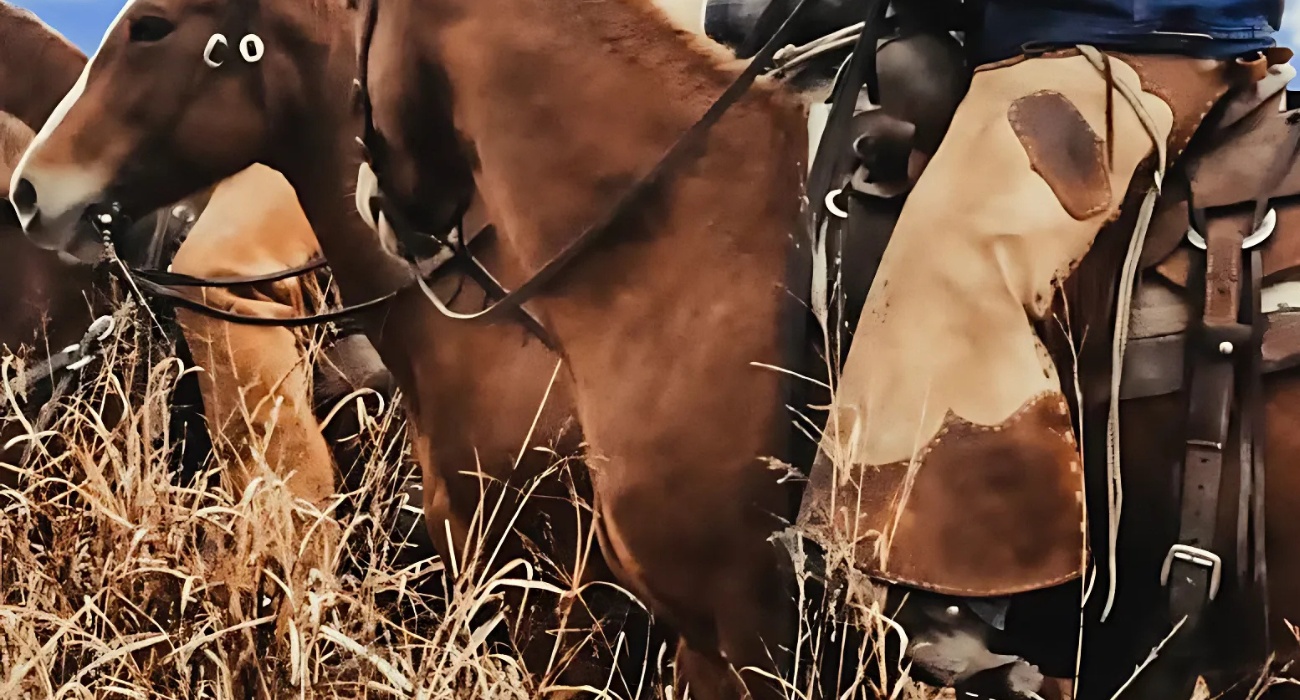

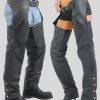
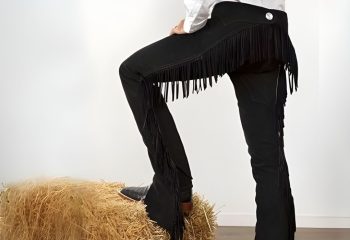

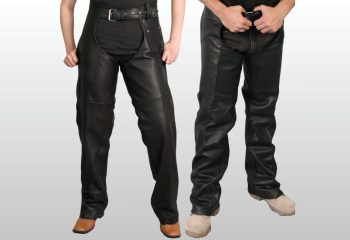
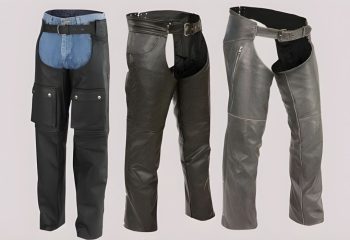
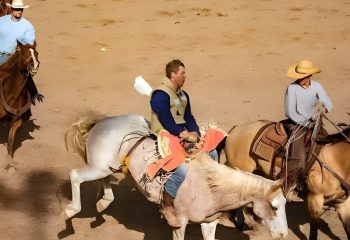
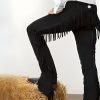
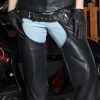
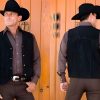
Recent Comments